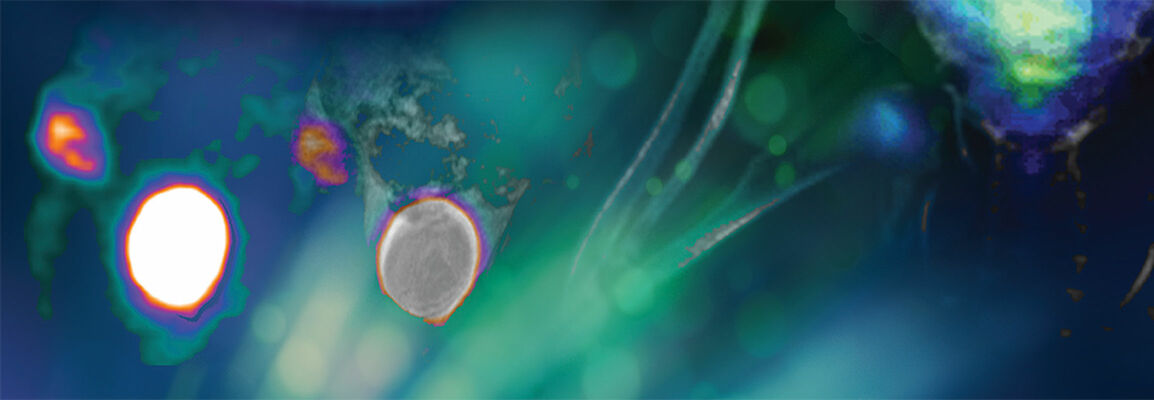

In Vivo Magnetic Resonance Imaging
In vivo MRI is a preclinical imaging technique in oncology research that involves the study of chicken egg embryos and a structure called the chorioallantoic membrane (CAM). The CAM is a highly vascularized and specialized tissue that performs various functions during embryonic development. The CAM model is a simple, low-cost and highly effective tool in the study of tumor angiogenesis, tumor growth, metastasis and cancer treatment; processes that can all be non-invasively monitored using MRI.
In this webinar, medical physicist Prof. Volker Rasche (University Hospital Ulm, Germany) and Bruker’s MRI product specialist Dr. Thomas Basse, will discuss how in ovo MRI can be used to non-invasively monitor contrast agent-labelled compounds in CAM models of transplanted tumor cells.
This webinar took place on October 11th, 2017
What to Expect
Prof. Rasche will begin by explaining what in ovoMRI imaging involves. For example he will describe a special cooling technique he and his team developed to prevent the embryo moving during data acquisition to enable high quality data. The main focus of the webinar will be the importance of non-invasively monitoring the biodistribution of injected contrast-agent-labelled compounds and how in ovo MRI can be applied to achieve this. Using the technique, contrast agents can be injected systemically and then longitudinally monitored to assess their biodistribution. This enables a stepwise approach to testing, where only those compounds that appear promising in the in ovo model will be selected for final testing in small animal models on their 11.7 Tesla BioSpec.
In ovo MRI provides an efficient testing technique to determine promising compounds and therefore minimizes the number of necessary animal experiments. Furthermore, eggs are readily available and often cheap in comparison to research animals. Since the embryonic phase is immunodeficient, cells from different tissues and species can easily be transplanted and studied, including human cell lines.
Recently, Prof. Rasche and his team used in ovoMRI to compare the biodistribution of an off-the-shelf conventional contrast agent with that of a dedicated polymer-based contrast agent developed by the Max Planck Institute in Lyon. The experiment clearly showed that the polymer-based agent stayed in tumors longer than the conventional agent did, thereby proving the efficacy of the in ovo model for assessing the biodistribution of such agents with MRI. Many oncologists are also using the CAM model to investigate tumor volume and size. Another promising application of in ovo MRI may therefore be quantification of the progression or regression of tumors in response to therapy
Key Topics
- Preparing chick embryos to enable high quality, long duration scans
- Performing in ovo MRI on a conventional preclinical system and hardware
- Visualization of contrast agent distributions in fetal transplanted tumors
- Anatomic imaging of transplanted tumors, including diffusion weighted imaging, T2 weighted imaging and T2 quantification
Who Should Attend?
The webinar will be of interest to anybody using MR systems for oncology research, ranging from technicians through to bio-engineers, biological researchers and physicians.
Speakers
Professor Volker Rasche
Ulm University Clinic of Internal Medicine II, Ulm, Germany
Ulm, GermanyProf. Dr. V. Rasche - Experimental Cardiovascular MRI, Ulm University Medical Center:Prof. Rasche has worked in the field of medical imaging over the last 25 years. He is a renown physicist for developing new imaging methods for clinical and preclinical cardiovascular imaging applications. After 15 years with industrial research and a position as visiting scientist at Harvard Medical School, he picked up a full professorship for experimental cardiovascular imaging at the University of Ulm. His main research interests are in the field of motion quantification, imaging of the vessel wall, multi-modal use of modalities for interventional procedure guidance, and the application of MRI to new fields. In his scientific career, he has published more than 110 peer reviewed papers, contributed more than 200 conference contributions and is currently holding more than 65 patents in the field of medical imaging.
Dr. Thomas Basse
Product Specialist MRIBruker BioSpin Ettlingen, Germany
Thomas joined Bruker in 2014 as an application scientist and is now the Product Specialist MRI at Bruker. Previously, he studied Physics at the University of Würzburg where he graduated in 2012. During his time in Würzburg, Thomas focused on the application of 19F MRI in fields of neurology and oncology.